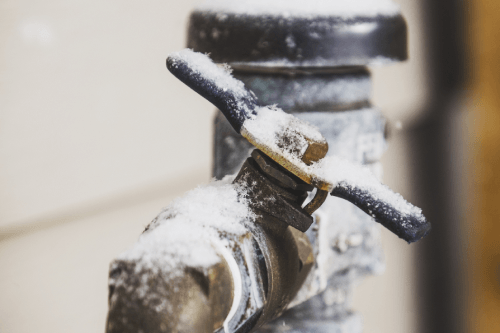Ways to Safeguard Your Plumbing from Freezing: Key Advice
Ways to Safeguard Your Plumbing from Freezing: Key Advice
Blog Article
What're your thoughts about How to prepare your home plumbing for winter weather?

Winter can damage your plumbing, especially by freezing pipes. Below's exactly how to prevent it from happening and what to do if it does.
Introduction
As temperature levels drop, the danger of icy pipes boosts, possibly leading to expensive repair work and water damages. Recognizing how to prevent frozen pipes is critical for homeowners in chilly climates.
Comprehending Icy Pipelines
What triggers pipelines to ice up?
Pipes ice up when revealed to temperature levels listed below 32 ° F (0 ° C) for extended durations. As water inside the pipelines ices up, it increases, taxing the pipe walls and possibly triggering them to break.
Dangers and damages
Icy pipelines can result in supply of water disturbances, residential or commercial property damages, and costly repairs. Ruptured pipes can flood homes and cause substantial structural damages.
Signs of Frozen Pipeline
Recognizing icy pipelines early can stop them from breaking.
Just how to identify frozen pipelines
Look for lowered water circulation from taps, unusual odors or noises from pipes, and visible frost on subjected pipelines.
Prevention Tips
Protecting vulnerable pipelines
Wrap pipes in insulation sleeves or use warm tape to shield them from freezing temperatures. Concentrate on pipelines in unheated or exterior areas of the home.
Heating methods
Maintain indoor rooms effectively warmed, especially areas with plumbing. Open cabinet doors to allow warm air to circulate around pipes under sinks.
Safeguarding Outside Plumbing
Garden hose pipes and outdoor faucets
Detach and drain pipes garden hose pipes before wintertime. Mount frost-proof spigots or cover exterior taps with insulated caps.
What to Do If Your Pipes Freeze
Immediate activities to take
If you believe frozen pipes, keep faucets open to ease pressure as the ice thaws. Use a hairdryer or towels soaked in hot water to thaw pipes gradually.
Long-Term Solutions
Architectural changes
Think about rerouting pipes far from outside wall surfaces or unheated areas. Add extra insulation to attic rooms, cellars, and crawl spaces.
Updating insulation
Invest in premium insulation for pipes, attics, and wall surfaces. Proper insulation assists preserve regular temperatures and minimizes the risk of frozen pipes.
Final thought
Avoiding frozen pipes needs positive actions and fast responses. By understanding the causes, signs, and preventive measures, house owners can secure their pipes during cold weather.
5 Ways to Prevent Frozen Pipes
Drain Outdoor Faucets and Disconnect Hoses
First, close the shut-off valve that controls the flow of water in the pipe to your outdoor faucet. Then, head outside to disconnect and drain your hose and open the outdoor faucet to allow the water to completely drain out of the line. Turn off the faucet when done. Finally, head back to the shut-off valve and drain the remaining water inside the pipe into a bucket or container. Additionally, if you have a home irrigation system, you should consider hiring an expert to clear the system of water each year.
Insulate Pipes
One of the best and most cost-effective methods for preventing frozen water pipes is to wrap your pipes with insulation. This is especially important for areas in your home that aren’t exposed to heat, such as an attic. We suggest using foam sleeves, which can typically be found at your local hardware store.
Keep Heat Running at 65
Your pipes are located inside your walls, and the temperature there is much colder than the rest of the house. To prevent your pipes from freezing, The Insurance Information Institute suggests that you keep your home heated to at least 65 degrees, even when traveling. You may want to invest in smart devices that can keep an eye on the temperature in your home while you’re away.
Leave Water Dripping
Moving water — even a small trickle — can prevent ice from forming inside your pipes. When freezing temps are imminent, start a drip of water from all faucets that serve exposed pipes. Leaving a few faucets running will also help relieve pressure inside the pipes and help prevent a rupture if the water inside freezes.
Open Cupboard Doors
Warm your kitchen and bathroom pipes by opening cupboards and vanities. You should also leave your interior doors ajar to help warm air circulate evenly throughout your home.

As a keen reader on Helpful Tips to Prevent Frozen Pipes this Winter, I imagined sharing that piece of content was worth the trouble. Are you aware of another person who is looking into the subject? Feel free to share it. Many thanks for going through it.
Click Here Report this page